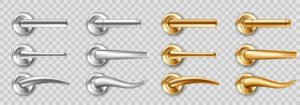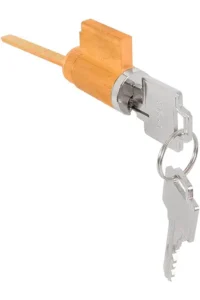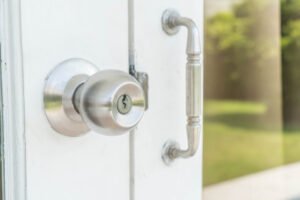Introduction :
We must select best door lock parts whenever we need to solve the problems of our door locks for security issues. These components may seem simple at first glance, but they play a crucial role in safeguarding our homes. In this article, we will take a closer look at door lock parts, how they work, and why understanding them is essential for your home’s security.
The Key Players
Let’s start with the key players, the primary components of door locks are the door lock parts.

a . Cylinder:
In door lock parts the cylinder is the heart of your lock. It’s where you insert your key to lock or unlock the door. There are two main types of cylinders A “PIN TUMBLER” and B “WAFER TUMBLER” each with its own unique mechanism.

b . Latch:
The latch have an important role in door lock parts that keeps the door closed. When you turn the doorknob or use a key, the latch retracts to allow the door to open.

Designed by Free Pick
c . Role of Bolt : In Door Lock Parts:
The bolt is what secures the door when it’s locked. When you turn the key or handle, the bolt extends or retracts into the door frame, preventing unauthorized entry.

Design by Free Pick
d. Strike Plate:
The “strike plate” is another key component of door lock parts. It is the metal plate installed on the door frame. It provides a solid surface for the bolt to lock into, adding to the overall security of the lock.
Types of Door Locks
Now that we know the main door lock parts, let’s explore in the different types of door locks:
a . Door Lock Parts In Deadbolt Locks:

Designed by Free pick
Deadbolts are known for their high level of security. They consist of a single, solid bolt that extends into the door frame. They’re a great choice for front doors.
b . Knob Locks:
Knob locks are common on interior doors. They have a “knob” on both sides and are typically less secure than deadbolts.
c . Lever Handle Locks:
Lever handle locks are similar to knob locks but have a “lever” instead of a “knob”. Almost They are used in commercial buildings.
d . Smart Locks:
Smart locks are a modern innovation, allowing you to control your lock remotely using a smartphone app. They often have electronic keypads or biometric access.
Understanding Lock Mechanisms
Locks operate using different mechanisms. Let’s briefly explore them:
a . Pin Tumbler Mechanism:
Pin tumbler locks use a “set of pins” that must align at the correct height for the lock to turn. When the key matches these heights, the lock can be operated. These “set of pins” includes in basic door lock parts.
b . Wafer Tumbler Mechanism:
Wafer tumbler locks use “wafer-like components” instead of “pins”. These wafers need to align properly for the lock to turn.
c . Tubular Lock Mechanism:
Tubular locks use a circular key with a pattern of notches that must match the lock’s pins or wafers. These are commonly found on bike locks.
Security Considerations In Door Lock Parts:
Your choice of door lock parts is a critical aspect of home security. Here are some security considerations.
a . Grade Levels:
Locks are graded by the American National Standards Institute (ANSI) based on their durability and security. Grade 1 offers the highest security, while Grade 3 is the lowest.
b . Lock Picking:
Some locks are more resistant to lock-picking techniques, which is an essential factor to consider when choosing a lock.
c . Rekeying:
Consider locks that are easy to rekey, so you can change the key without replacing the entire lock.
Installation and Maintenance
Proper installation and maintenance are crucial for your door lock’s functionality and security. Here are some tips:
a . Professional Installation:
It’s wise to have a professional locksmith install your door locks to ensure they are correctly aligned and secure.
b . Lubrication:
Regularly lubricate your lock’s moving parts to prevent rust and ensure smooth operation.
c . Check Screws and Strike Plates:
Make sure that the screws holding the strike plate are long enough to secure the lock to the door frame properly.
Common Issues and Troubleshooting
Even the best door locks can encounter problems over time. Here are some common problems how we have to solve them:

a . Sticking Lock:
If your lock is difficult to turn, try lubricating the keyway. If the problem persists, the lock may need professional attention.
b . Loose Door Handles:
Loose handles can be tightened by removing the screws and using a screwdriver to secure them.
c . Key Stuck in Lock:
Don’t force the key. Apply a lubricant and gently remove it. If that doesn’t work, contact a locksmith.
